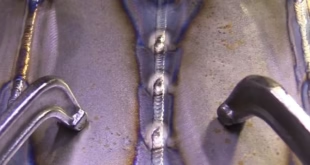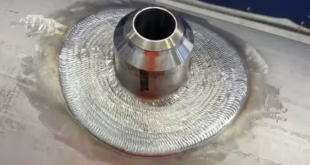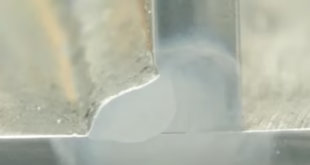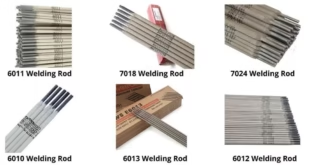Advantages and Disadvantages of TIG Welding
Introduction
Tungsten Inert Gas (TIG) welding is a highly precise and versatile welding technique that is used in a wide range of industries, from aerospace and automobile manufacturing to construction and repair work. TIG welding is known for its ability to produce high-quality, precise welds with minimal distortion and spatter. However, like any welding technique, TIG welding also has its own set of advantages and disadvantages. In this article, we will explore the benefits and drawbacks of TIG welding, including the types of materials it can be used on, the level of skill required, and the costs associated with the process.

Advantages of TIG Welding
There are many advantages of TIG welding. These advantages are discussed below:
- TIG welding can be used to weld a wide array of metals and alloys of materials. It can be used to weld aluminum, magnesium, steel, copper, nickel, titanium, and their alloys.
- A TIG welding is perfect for customized functions as it can be used to perform any specific tasks as required by the application.
- TIG welding is best for extremely complex metal welding as it can be applied to different types of metals with varying thicknesses.
- As TIG welding uses non-consumable Tungsten electrodes and a stable arc. This provides controllability and good-quality welding.
- TIG welding uses safe gases, hence it provides high-quality and defect-free results.
- TIG welding has more options for application, it can be used easily at difficult or hard-to-reach positions and weird angles. The best example is welding overhangs, where the position of the welding torch is very specific.
- TIG welding uses colorless and safe gasses as shielding that provides more visibility (smoke-free) while doing welding operations. It also helps the welder to clearly observe the workpiece and the puddle.
- TIG welding has applications where high precision is required. It provides detailed precision, it also helps in controlling the temperature.
- TIG welding has a wide range of applications because of various position options, varying dimensions, varying thicknesses, and multiple sizes, and shapes. Therefore it has applications in industrial equipment, vehicle industry, aviation, and aerospace industries.
- TIG can be used to weld in almost any position i.e., flat, horizontal, vertical, and overhead positions. Therefore it has advantages over other welding types.
- It provides high-quality output, therefore it is used where quality work is critical like in making Pipes, tubes, vessels, aerospace industry.
- TIG welding uses non-consumable electrodes and there is no need of stopping the replacement of electrodes compared to consumable electrode welding. Hence it saves time.
- TIG welding provides high finishing. Hence where more neat, clean, and quality joints are required TIG welding is preferred.
- TIG welding is versatile, i.e., it can be done with or without filler metal.
- It provides non-corrosive and ductile joints.
- This is very safe it produces the minimum amount of flames and sparks as it has a small heat zone.
- It can be done manually or it can be automated.
- It can use both AC and DC current as a power supply.
- TIG welding does not produce slag which is a by-product of most arc welding processes.
- The price of TIG welding services is also reasonable but it also depends on the material to be welded or the scope of the project.
Disadvantages of TIG Welding
TIG welding has many advantages but there are many disadvantages. Following are the disadvantages listed below:
- TIG welding requires a lot of skill to perform it. It can’t be done without expertise.
- TIG welding takes more time compared to other welding techniques.
- Polarity is important, if the wrong polarity is used it can easily contaminate the weld bead.
- In TLG welding when control over heat is gone, the overall weld strength reduces. This thus affects the microstructure of the metals.
- Constant gas flow is required for TIG welding, which is very difficult to provide. Without a controlled environment, this would not be possible.
- The equipment and inert gases required in the TIG welding process are more pricey as compared to other welding types.
- It is a time-consuming welding process, as it requires a lot of time to finish.
- while comparing time and speed, the TIG welding machine is slower than any other welding machine. Also, the TIG welding machine has a lower filler deposition rate.
- As TIG welding is used for thin materials, it requires special training and expertise to operate it.
- It requires proper cleaning before the operation as the inert gas is used.
- It has safety issues, the welders working here are exposed to high intensity of light that is bad for the eyes.
- High initial cost i.e., required instrument and high maintenance cost as compared to arc welding.
- It cannot use in metals that have thicker sheets. Its operation is limited up to 5 mm.
FAQs
What are the limitations of TIG welding?
TIG welding, also known as Gas Tungsten Arc Welding (GTAW), has several limitations including: -It is a slow process compared to other welding methods such as MIG or stick welding. -It requires more skill and practice to master compared to other welding methods. -It is not suitable for welding thick materials or high-production welding.
What are the advantages and disadvantages of TIG?
Advantages of TIG welding include: -It produces a high-quality, precise weld with minimal distortion. -It allows for the use of a wide range of metals, including aluminum and stainless steel. -It produces less spatter and smoke than other welding methods. Disadvantages of TIG welding include: -It is a slower process than other welding methods. -It requires a higher level of skill and practice to master. -It is not suitable for high-production welding or welding thick materials.
What is the greatest advantage of TIG welding?
The greatest advantage of TIG welding is its ability to produce high-quality, precise welds with minimal distortion.
When should TIG welding be used?
TIG welding should be used when precision and aesthetics are important, such as in the aerospace and medical industries, or when welding thin materials or dissimilar metals.
What pressure is needed for TIG?
TIG welding requires a low-pressure argon gas supply and no pressure is needed.
Does TIG need ventilation?
TIG welding does not produce any harmful fumes so ventilation is not necessary.
Can you TIG without gas?
TIG welding can be done with or without gas, but if done without gas, the process is called “Stick TIG”, which is less common and less efficient.
Does TIG welding need electricity?
TIG welding needs both electricity and gas to work, the electricity is used to create an arc between the tungsten electrode and the workpiece, the gas is used to shield the weld pool from atmospheric contamination.
What type of power source is used for TIG?
TIG welding requires a specific type of power source known as a “DC TIG” welder, which can provide a steady, direct current to the electrode. Some TIG welders also offer the option to switch between direct and alternating current, which can be useful for welding different types of metal.
Conclusion
In conclusion, TIG welding is a precise and versatile welding method that offers many advantages such as high quality welds, the ability to weld a wide range of materials, and minimal distortion of the workpiece. However, it also has some disadvantages including a slower welding speed, a higher skill level required, and the need for specialized equipment. Ultimately, whether TIG welding is the best choice for a particular project depends on the specific requirements of the job and the skill level of the welder.
 Welding of Welders All about Welding and Welders
Welding of Welders All about Welding and Welders



